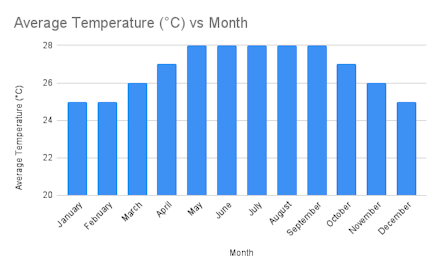The Philippines, an archipelago nation in Southeast Asia, is blessed with a tropical climate. With over 7,000 islands, the country offers a wealth of stunning landscapes, from pristine beaches to verdant mountains. Weather patterns can vary slightly across different regions, but overall, the Philippines has two main seasons: the dry season and the rainy season.
Philippines' Seasons (Quick Version)
Dry Season (Nov–Apr)
- The dry season is generally characterized by sunny, clear days and cooler temperatures, especially from December to February.
- The latter half of the dry season can be quite hot, with temperatures often reaching the mid to high 30s °C.
Rainy Season (May–Oct)
- The rainy season is when the country experiences heavy rainfall, often in the form of afternoon or evening showers.
- Despite the frequent rain, there are still periods of sunshine and the scenery is lush and green.


Best Time To Visit The Philippines
Determining the best time to visit the Philippines can depend on many factors, including your interests, specific destinations within the country, and the purpose of your travel.
The dry season, from November through April, is often considered an ideal time for a visit due to the reduced likelihood of rainfall and pleasant, sunny weather. This is especially true if you're planning on visiting the beach or engaging in outdoor activities. However, if you don't mind occasional rain and prefer a lush, green environment with fewer tourists, the rainy season could also be an option. The choice is ultimately dependent on personal preference.
In terms of wildlife, certain seasons offer unique opportunities. For example, the Tubbataha Reefs Natural Park, known for its incredible biodiversity, is open to divers from March to June. For whale shark interactions, the peak season in Donsol is from November to June.
Finally, if you're interested in experiencing the Philippines' vibrant cultural festivals, many of them occur during the dry season. Notable examples include the Sinulog Festival in Cebu in January and the Panagbenga Festival in Baguio in February.

